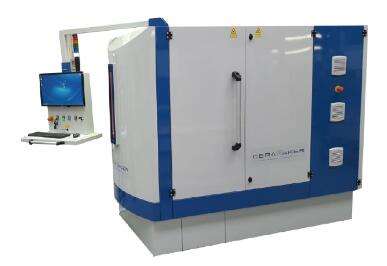According to a recent report by the physicist organization network, the research team of the City University of Hong Kong has successfully developed the world's first ceramic 4D printing system. The printed ceramics are strong and have complex shapes, which are expected to make a big splash in the fields of electronics and aerospace.
The melting point of ceramics is very high, so it is difficult to manufacture with traditional laser printing technology; the existing 3D printed ceramic precursors are usually difficult to deform, making it difficult to manufacture ceramics with complex shapes. In response to these challenges, a team led by Professor Lu Jian (transliteration), head of the Department of Mechanical Engineering, has developed a new type of "ceramic ink", which is a mixture of polymer and ceramic nanoparticles. The 3D ceramic precursor printed with this new ceramic ink is very soft and can be stretched to three times the original length. These flexible and stretchable ceramic precursors can be made into ceramics with complex shapes through appropriate heat treatment. Moreover, on this basis, the research team has developed two ceramic 4D printing methods.

4D printing is traditional 3D printing plus the fourth dimension-time. In the fourth dimension, the printed object can be reshaped or self-assembled over time under the stimulation of the external environment (such as mechanical force, temperature or magnetic field) . In the latest research, the team used elastic energy stored in a stretched ceramic precursor to deform the ceramic. When the stretched ceramic precursor is released, it undergoes self-reforming. After heat treatment, the precursor becomes ceramic. The resulting ceramic is strong and has a high compressive strength-density ratio. In addition, compared with other printed ceramics, they can form large-scale structures with high strength.
Lu Jian said: "With the deformability of the printed ceramic precursor, its application may be very large. One promising application is the manufacture of electronic products." In terms of transmitting electromagnetic signals, ceramic materials have better performance than metal materials. In addition, the artistic characteristics of ceramics and its ability to form complex shapes also provide consumers with the potential to obtain customized ceramic mobile phone backplanes.
This innovation can also be applied to the aerospace industry. Lu Jian explained: “Since ceramics are a material with high mechanical strength that can withstand high temperatures, 4D printed ceramics have great potential for use as propulsion components in the aerospace field.â€
Lu Jian said that the next step is to improve the mechanical properties of the material, such as reducing its brittleness.
Genuine Flip Cover Leather Case
Genuine Flip Cover Leather Case,Cover Leather Case,Flip Cover Leather Case,Genuine Leather Case
Guangzhou Jiaqi International Trade Co., Ltd , https://www.make-case.com